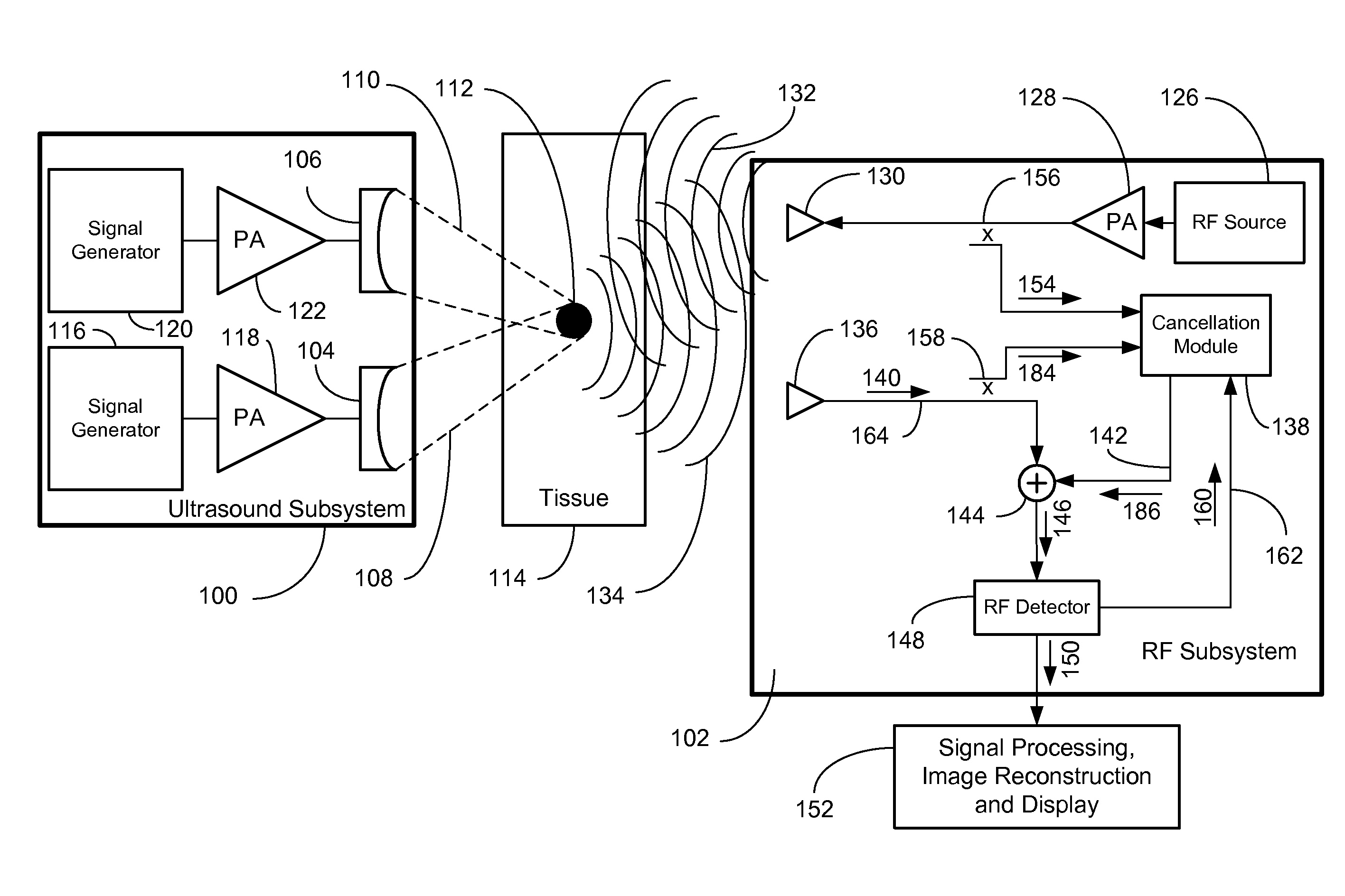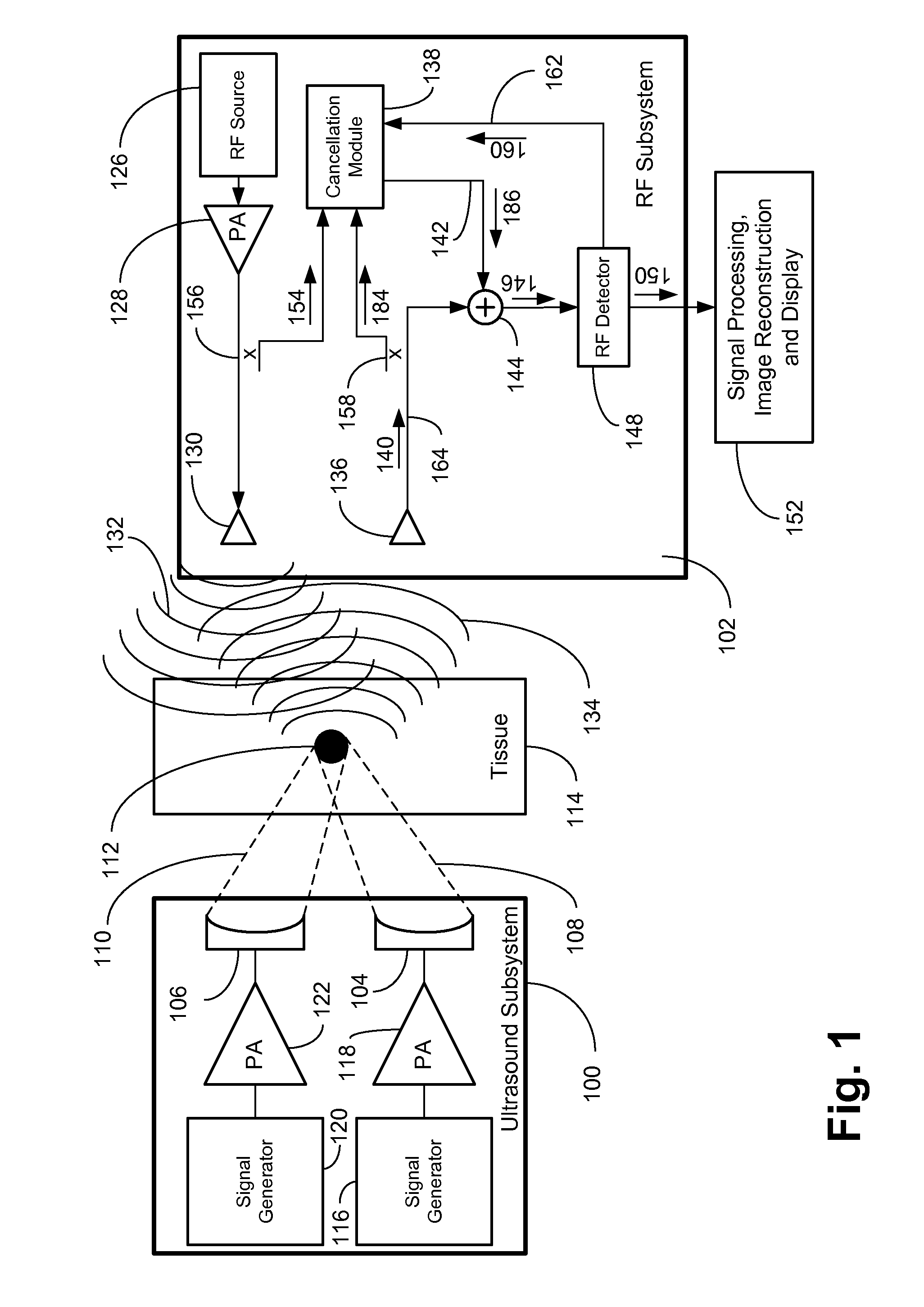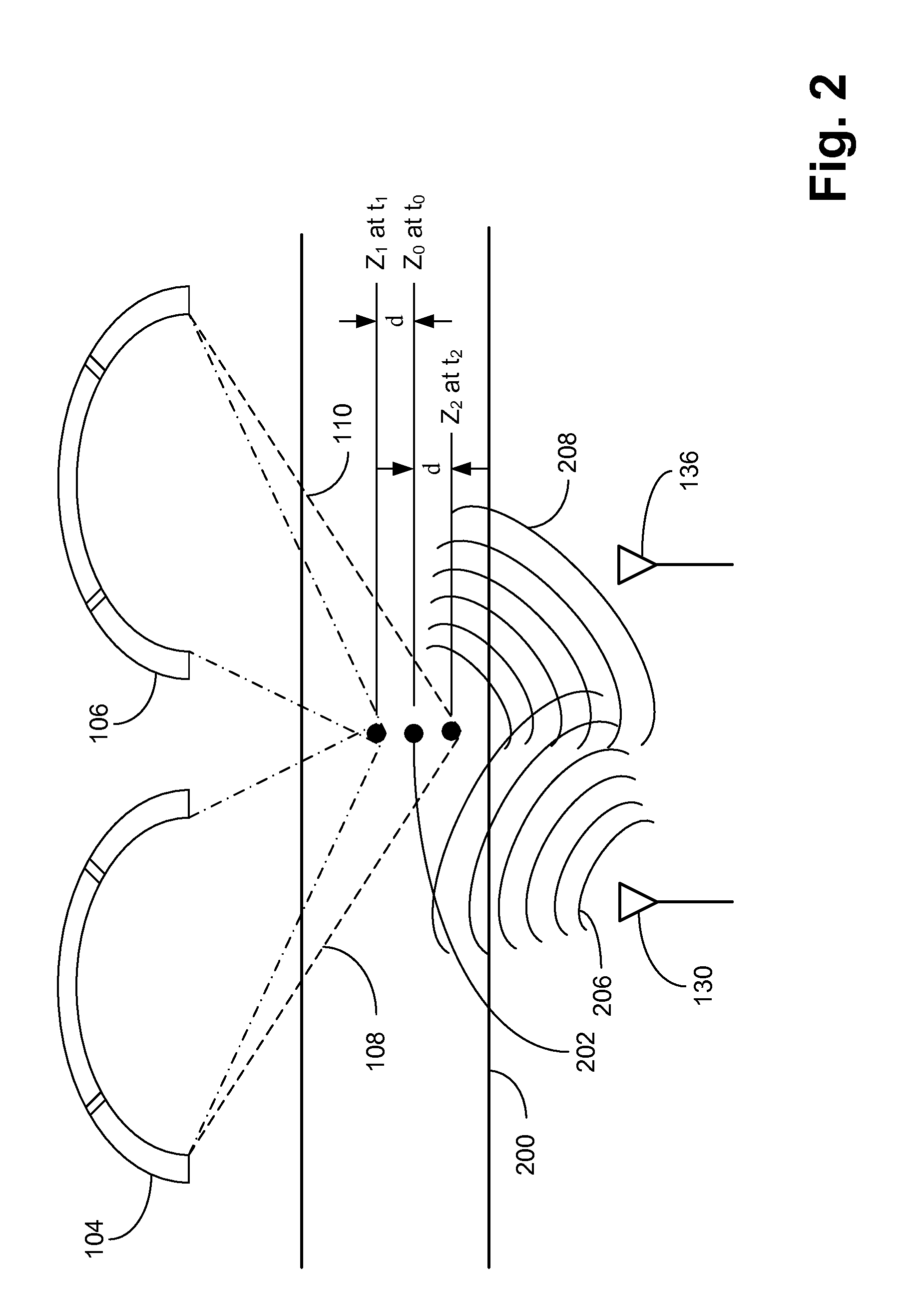However, mammography results in too many false negatives and false positives which delays the detection of
early cancer, or results in unnecessary biopsies and expense.
Additionally, mammography results are unreliable in the case of dense or fibrocystic breast tissues.
This makes mammography unsuitable for
cancer detection in young women with familial history and dense tissues and it further exposes these women to the danger of frequent
exposure to
ionizing radiation.
However, the cost of MRI is prohibitive and the procedure is too long and results in discomfort and
anxiety for many patients.
While ultrasound images achieve an excellent resolution and reasonable
depth of penetration, the resulting images have relatively poor contrast.
However, since the
wavelength of microwaves in
soft tissue is on order of a few centimeters, the spatial resolution of this method is limited.
As a result, imaging methods that rely on microwaves alone are disadvantaged by the necessity to
trade off low-frequency penetration against high-frequency contrast.
This proved to be quite challenging using any single imaging modality because, used alone, each has significant limitations.
It is very difficult to obtain a small spot size with a focused beam of
microwave energy even if an array is used.
Such large arrays would be too large and impractical to address parts of human or animal
anatomy.
Such precision timing requires a very complex computer system and extensive
microwave and digital hardware to implement.
This simple integration using independent electrical signals from the ultrasound and
microwave modalities, as proposed by the Rosner et al. reference, does not take
advantage of the
physical interaction of the ultrasound and microwave modalities.
Therefore, this method of combining the image results from microwave and from ultrasound possesses the same disadvantages of each subsystem when used independently.
It is obvious to those skilled in the art that the proposed system fails to concurrently achieve the desired combination of high penetration,
high resolution, and
high contrast.
Additionally, in the case of the Rosner et al. reference, as a result of the microwave
wavelength, the detection is the result of large area excitation which inherently results in
low resolution of microwaves which make the Rosner et al. reference's teaching capable of only detecting targets with
centimeter dimensions.
Also, the proposed teaching fails to address the problem inherent in
short range radar system where it is impossible to turn off the
transmitter during the reflected
signal detection causing tremendous degradation to the
signal-to-
noise ratio and the overall imaging scheme.
Conversely, other parts of human or animal
anatomy that lack significant protrusion from the body could not be imaged.
It is well known to those skilled in the art that the magnitude of the difference in elastic constants for these two types of tissue is relatively small, typically on the order of 1 to 10% percent, thus resulting in a much poorer contrast compared to methods that use the difference in
dielectric contrast which, as pointed out by Li et al. is on the order of 400%.
However, there is no a priori reason that the standing
waves will induce significant tissue motion at the precise
tumor location.
The acoustic losses of the breast-loaded cylinder will broaden the
acoustic resonance, thus decreasing the amplitude of the standing
waves and making precise determination of the
frequency shift difficult.
Frequencies high enough to be unaffected by the predetermined mechanically rigid shape as might be the case for
millimeter wave
radiation are highly absorbed by the surrounding tissues and thus cannot be used.
Further,
coupling the microwave energy into the predetermined mechanically rigid shape could be difficult if the predetermined mechanically rigid shape is anywhere near an electromagnetic resonant frequency.
The small
low frequency signal that the Parker et al. teaching requires to be extracted may be overwhelmed by the 1 / f
noise of the microwave oscillator that provides the microwave signal.
Such
noise is inherent in all oscillators and cannot be arbitrarily reduced or eliminated.
In addition to the loss of contrast mentioned earlier, these factors may place further limits on the minimum size of tumors that may be detected with the Parker et al. reference methodology.
(January 2010), means for precisely and expeditiously solving the inverse problem where internal properties of an inhomogeneous medium determined by means of external measurements in conjunction with computationally-based
estimation of the internal fields and properties of the medium has proved to be prone to error.
Additionally, the Meaney et al. reference because of its reliance on microwave only, suffers from the need to
trade off low-frequency to achieve penetration against high-frequency to achieve
high resolution.
While there may some marginal benefit from the teachings of two overlapping images or creation of a three dimensional image, the Dines et al. methodology has disadvantages inherent in each of the two methods applied separately.
The
skin layer covering the breast tissue presents another major challenge due the reflection of energy at the
skin and the tank fluid and the
skin and the breast tissue boundaries.
This introduces significant signal
clutter and interferes with the propagation path of thermoacoustic
waves resulting in errors when performing the inverse calculation thus negatively impacting the
image quality.
However, none of the methods proposed can get around (1) the loss of contrast due to inhomogeneities obscuring the tumors located behind them, (2) shadowing by an inhomogeneity located in front of a tumor, or (3) determining ways to overcome the effect of attenuation as the microwave propagates through the breast tissue or to precisely account for the
time of flight of the reflected thermoacoustic signals.
These challenges become even greater when imaging a cystic or dense tissue.
The
ultrasound energy through its interaction with the nonlinearity of the inclusion induces
low frequency vibration in the target inclusions which results in measurable displacement of the inclusion and causes a Doppler shift in the reflected radio frequency signals.
Likewise microwave-only
imaging modalities require solving the inverse problem which can produce imprecise results and is limited in resolution to a fraction of the
wavelength used for measurement.
 Login to View More
Login to View More  Login to View More
Login to View More 


